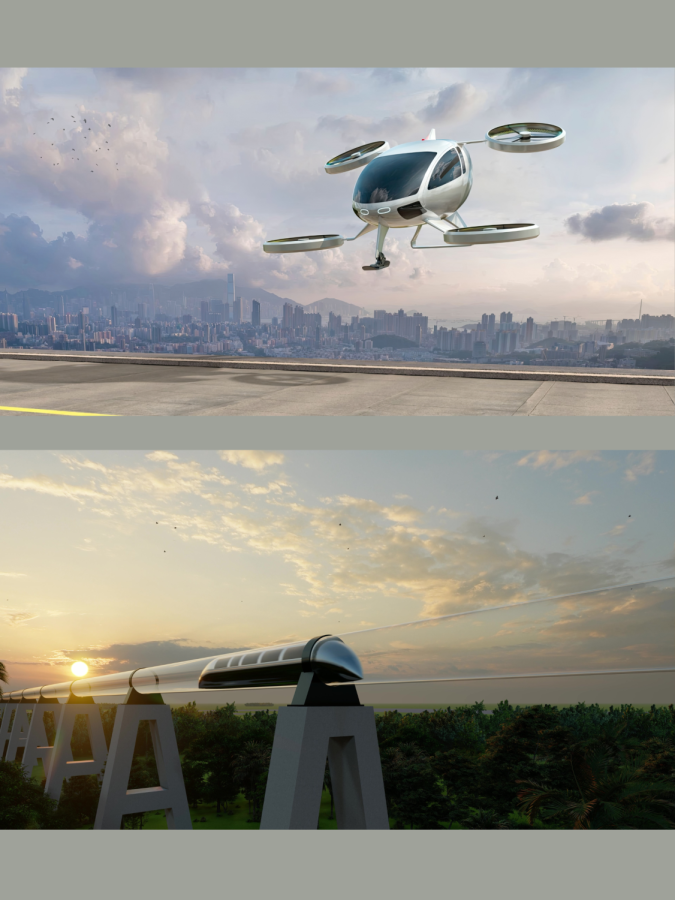Innovative advances in technology are revolutionizing the future of public transportation
Flying cars, personal spaceships, and levitating trains are what futuristic sci-fi movies tell us the future should be like. Although these dreams may seem unattainable, with rapidly advancing technology, they may be closer than we think.
As of 2022, there are eight billion people on Earth. As the population of our planet grows exponentially, we are quickly running out of ways to adapt our cities to a constantly packed and crowded world. With rapidly approaching issues, especially pertaining to transportation in heavily populated cities, new ideas that had previously been deemed unfeasible are becoming essential in our plans for the future.
CO2 emissions have been on the rise, and in a scenario made by NASA situated in 2050, if air pollution keeps escalating at this rate, the overall global temperature could increase by 2.7 degrees Fahrenheit. While this may seem like an inconsequential amount, it could lead to an increase in heatwaves worldwide and the continuation of extreme temperatures on both ends. Cars and planes are two major sources of carbon emissions, and we need more eco-friendly modes of transportation that can also accommodate for the extensive growth in our population.
One idea that has been brought to the table is the Hyperloop.
The Hyperloop is a proposed high-speed system for public transportation that gets from point A to B faster by reducing friction and drag through magnetic tunnels that allow the train car to levitate and propel itself through the tunnel. The decrease in drag and friction also decreases energy consumption, making it a more sustainable and eco-friendly option. With this technology, a typically 4-hour drive from Washington, D.C. to New York City could be reduced to a 30-minute Hyperloop ride.
These revolutionary and innovative ideas of the future are what will help us cut back on CO2 emissions and make public transportation accessible to more people. There are, of course, issues within every plan of action, and one of the significant flaws in the designs of these futuristic projects is the cost. The expenses for Hyperloop are estimated at 75.6 million USD per kilometer, and the funds for these projects don’t just appear from thin air.
Another proposition for high-tech transportation is the eVTOL (electronic vertical take-off and landing) Volocopter, an electric vehicle that functions much like a drone. The eVTOL has multiple omnidirectional propellors that allow it to move in any direction, take off, and land smoothly. The idea was first thought up and introduced back in 2014 by the Vertical Flight Society and the American Institute of Aeronautics and Astronautics, but the thought of high-tech forms of air transportation has been around for decades.
The drone-like vehicle would be used both as passenger and cargo transportation and has been referred to as an “air taxi.” It could hold four passengers with their current models, and the eVTOL Volocopter is just one idea that is revolutionizing the public transportation industry. Since it’s electric, it’s another more sustainable method of travel, and Volocopter plans to launch commercial flights in places like Paris and Singapore by 2024.
This technology that is changing the travel industry is transforming before our very eyes and with revolutionary new ideas; the future is now.

Addie Woltil is a junior entering her third year writing for The Central Trend. She is excited about another year of writing on staff and more to come...

























































































